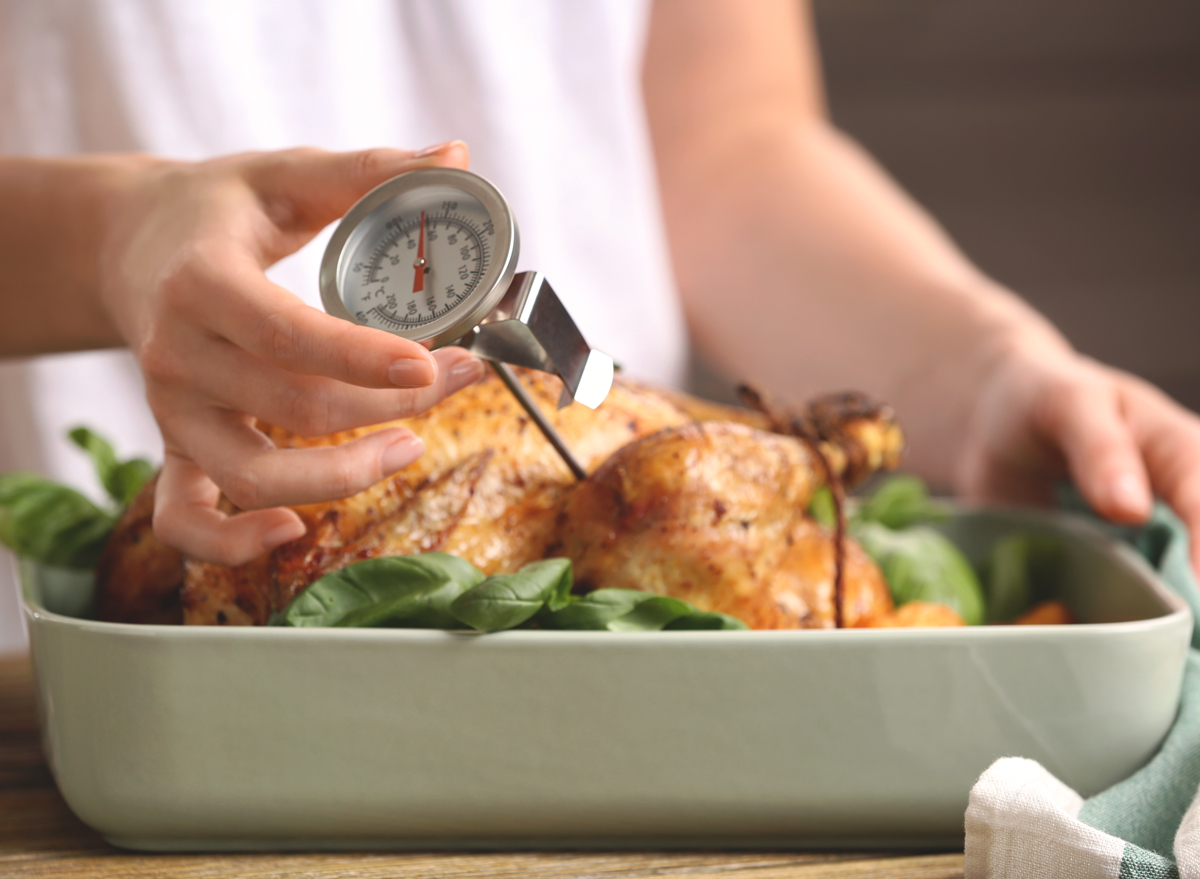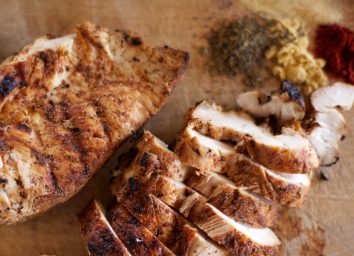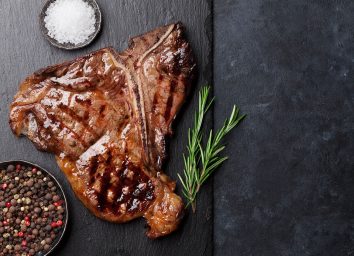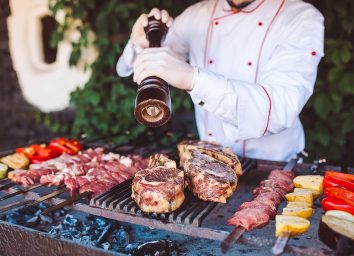If You Don’t Have a Meat Thermometer Yet, This Is Why You Need One

“Is it done yet?” It’s the question we all ask ourselves every time we cook meat. And you have complete power over answering that question in the best way possible. No, it’s not adding a few more minutes of cook time “just in case” to be left with a cut of meat as dry as your neglected succulents. And it’s definitely not dissecting the protein with jagged cuts to see if it’s raw inside. The proper answer lies with purchasing one simple tool: a meat thermometer.
If you invest in a meat thermometer, you can guarantee that each dish you make is never over or undercooked—read on for the other reasons you should have one in your kitchen, along with these useful gadgets, at all times.
Your Food (And Your Health) Will Benefit
The first and foremost reason you should invest in a meat thermometer is food safety. The Centers for Disease Control and Prevention (CDC) recommends cooking foods thoroughly and checking them using a meat thermometer to avoid nasty foodborne illnesses like Salmonella or norovirus. The CDC estimates that 48 million people get sick from a foodborne illness every year, and 1 million of those are from eating contaminated poultry.
- Beef: 145 degrees (medium well) Fahrenheit
- Pork: 145 degrees Fahrenheit
- Poultry (Chicken & Turkey): 165 degrees Fahrenheit
You Can’t Always Rely on Your Senses
Instead of guesstimating when the cut of meat (or casserole, for that matter) “looks” done, it takes only an extra few seconds to be safe and check the temperature. In fact, you can’t count on just the look or color of the meat to be sure your meat is done cooking, particularly if you’re cooking in dim lighting or on any kind of grill, says Food Network star Chef Jeff Mauro.
“On some meats, the color of the proteins can change when exposed to oxygen. So, when you first cut into the meat it might look perfect, but can turn red again in just a few minutes,” Mauro says. That’s why having a meat thermometer that actually reads the meat for temperature will help you determine when the protein is done cooking.
Another major mistake home cooks tend to make is forgetting to use a meat thermometer when grilling meat, thinking they’ll be able to tell it’s cooked just by looking at or smelling the meat. “A thermometer should also be used on grills and even indoor grills, like a George Foreman grill, to ensure your food is at the proper temperature. Grill marks on meat don’t always indicate that the food is properly cooked through,” Mauro adds.
Your Surgical Habit Is Preventing Proper Cooking
Taking a temperature reading with a meat thermometer, as opposed to cutting a piece of meat open, can make a world of difference when it comes to not only the look of the meat when plated, but it will also affect the flavor, Mauro says. “I recommend investing in a good, digital instant-read thermometer instead of cutting into the meat, because when you cut into the meat, you let out all the delicious juice and flavors that are sealed in, and the meat can become dry,” Mauro explains.
How to Use a Thermometer the Right Way
To get the most accurate temperature reading, place the thermometer in the meat while it’s still cooking in the pan or oven, or on the grill, Mauro says. Don’t make the mistake of taking it off the heat and then trying to gauge the temperature.
Then, make sure you measure in the right spot of the meat: the thickest part, to be exact. “I like using a digital probe thermometer; the monitor is on a cord which can be inserted into the deepest part of the protein,” says Chef Anthony Cole, executive chef at Chatham Bars Inn resort in Chatham, Massachusetts. Make sure your thermometer is in the center of the meat, and not hitting any fat or bones, Mauro echoes. “Most thermometers require you to insert the probe at least 1/2 inch into the meat, but if the meat is thicker than an inch, you’ll probably want to go deeper than that to reach the very center,” Mauro says.
Use it On More Than Meat
Also, thermometers can be used on more than just meat to eliminate the risk of food poisoning. Around the holidays, any kind of stuffing inside meat is a big one—it should always be heated to 165 degrees. “Turkey juices drip into the stuffing during roasting, so stuffing should reach the proper temperature for it to be safe to eat,” Mauro explains.
The same 165 degrees goes for casseroles or leftovers, to ensure that any bacteria that’s accumulated is killed before reheating. Even eggs and egg dishes like frittatas or baked eggs should be cooked and measured to 160 degrees to avoid diseases like Salmonella and be completely safe to eat.
Which One to Buy
Cook’s Illustrated and America’s Test Kitchen rated the ThermoWorks Thermapen Mk4 thermometer ($99) #1 best thermometer in their test of digital instant-read thermometers, and it’s a top pick of many professional chefs, including James Beard award-winning J. Kenji Lopez-Alt. It’s a great option if you’re working with meats and serving meals all the time.
But you don’t have to splurge if that’s not affordable for you, chefs say. “For the most accurate reading and for a thermometer that will last you a while, it’s definitely important to have the best quality that’s within your budget,” Mauro says. If you’re outfitting your kitchen on a budget, try a CDN Thin Tip Thermometer ($15).
It’s easiest to go for a model with an alarm that beeps when the food is set to serve, like the Taylor Precision Digital Cooking Thermometer ($17), Cole says, which is also a nice budget option. As long as the thermometer you choose is giving you an accurate reading for optimal safety, you’re good to go, and the taste of your food will certainly not be sacrificed.








